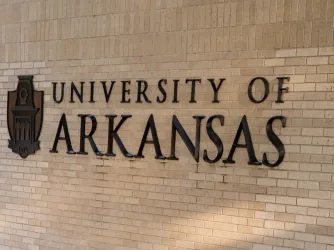Table of Contents
FIRE calls on Idaho’s Lewis-Clark State College to restore abortion-themed artwork censored to avoid violating state law

Katrina Majkut
Lewis-Clark State College in Lewiston, Idaho, has removed artwork from a new exhibit called "Unconditional Care: Listening to people’s health needs," citing a state law that prohibits the use of public funds to pay for or promote abortions.
Last fall, the University of Idaho earned national outrage when a university memo warned faculty not to “promote or advocate in favor of abortion” in the “performance of their job duties” or using “any university resources.” That memo cited a state law meant to prohibit the state from facilitating the performance of abortions. FIRE and others warned that such a broad interpretation of the law would result in censorship to the detriment of the First Amendment rights of students and faculty at Idaho’s public universities and colleges.
The censorship we warned about has now arrived at Idaho’s Lewis-Clark State College. On the eve of opening an art exhibit on public health issues, the public college’s administration ordered the curator to remove works — including some of the curator’s own — from the exhibit, citing the same Idaho law. When one of the artists asked which parts of her work were unlawful, she was met with silence — and the college then prohibited the artists from replacing the works with text explaining the law. The New York Times reports:
Lewis-Clark State College, in Lewiston, removed the works days before the opening this month of “Unconditional Care: Listening to People’s Health Needs.” The school’s Center for Arts & History described its show as an exploration of “today’s biggest health issues” through the stories of those affected, including “chronic illness, disability, pregnancy, sexual assault, and gun violence and deaths.”
Several national civil rights organizations have criticized the school’s decision or the state law it was trying to navigate.
Three artists had their work taken down, including Katrina Majkut, the show’s guest curator. Her censored work is an embroidery that depicts bottles of mifepristone and misoprostol, medicines taken in conjunction to end a pregnancy; accompanying wall text explains their efficacy and state laws governing their use.
Today, FIRE wrote Lewis-Clark State College explaining — as we did when the University of Idaho issued its misguided guidance — that its broad interpretation of Idaho’s No Public Funds for Abortion Act violates the First Amendment. The statute bans state entities from using state-authorized funds to “perform or promote abortion, provide counseling in favor of abortion, make referral for abortion, or provide facilities for abortion or for training to provide or perform abortion.”
We call on LCSC to restore the censored artwork to the exhibit and publicly clarify that it won’t suppress free expression in its lecture halls, in its artistic exhibits, or by its students and faculty.
FIRE’s letter explains that the college’s broad interpretation of the NPFAA is viewpoint discriminatory and “would ‘cast a pall of orthodoxy’ on public college campuses,” which is “sharply at odds with our national commitment to protecting freedom of expression and academic freedom at public institutions like LCSC.”
That’s because the college’s broad interpretation of the word “promote” in the statute would restrict a wide range of constitutionally protected expression — not just in an art exhibit, but in libraries, lecture halls, and student organizations:
That interpretation has troubling ramifications for the state of freedom of expression at LCSC, as it would just as readily restrict use of the same resources and spaces by students, student organizations, and faculty at LCSC—in violation of clearly established First Amendment rights. Likewise, when a state agency limits the art allowable in exhibition spaces the agency opens, those limitations founder under the First Amendment, which disdains efforts to “silence or muffle the expression of disfavored viewpoints.”
When a state official tells an art exhibit curator to remove certain art — relevant to the exhibit the university is hosting — because of the viewpoint the art expresses, that official is engaging in censorship. Unfortunately, it’s nothing new: Artists have too frequently been censored on campus and off, especially when their work addresses contentious subjects. Whether governments should favor or oppose abortion is beyond FIRE’s purview, but they are constitutionally barred from regulating the expression of ideas. There is no abortion exception to the First Amendment.
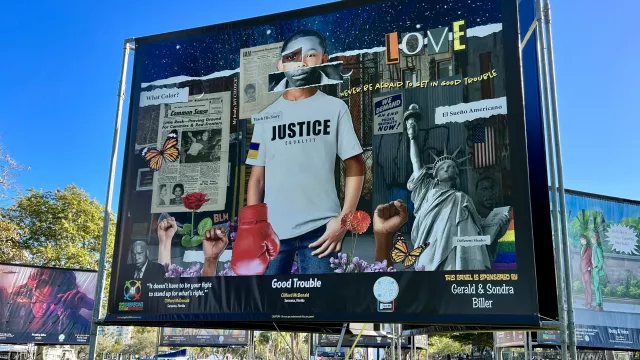
FIRE, NCAC object after State College of Florida censors art exhibit
The State College of Florida Bradenton requested a traveling art exhibition to remove pieces with the words “diversity,” “inclusion,” “justice,” and “equality."
And LCSC doesn’t have to censor artists to comply with the NPFAA, because a narrower construction of the law would keep the college from running roughshod over the First Amendment rights of artists, faculty, and students. As our letter explains, interpreting the word “promote” narrowly would allow LCSC to comply with state law and the First Amendment (which supersedes state law in any case):
As a result, LCSC has a legal obligation to interpret the statute narrowly to avoid a clash with the Constitution. And it can be interpreted narrowly. Properly contextualized within the broader statute, the NPFAA’s use of “promote” can be read not to broaden its sweep, but to narrow it. In U.S v. Williams, for example, the Supreme Court interpreted a comparable statute using a “string of operative verbs,” including “advertises, promotes, presents, distributes, or solicits,” as intended to reach “transactional” speech. This was because the “canon of noscitur a sociis . . . counsels that a word is given more precise content by the neighboring words with which it is associated.” The NPFAA’s use of similar words (“perform,” “provide counseling,” “make referral,” or “provide facilities”) likewise indicates that the intent was to prevent use of state property to facilitate the performance of abortions, not to censor art that simply references abortion in a public university’s art gallery.
As institutions are wont to do, LCSC is taking the broadest interpretation of the law in order to protect institutional interests at the expense of others’ fundamental expressive rights — freedoms intended to serve as the backbone of the academic enterprise. We call on LCSC to restore the censored artwork to the exhibit and publicly clarify that it won’t suppress free expression in its lecture halls, in its artistic exhibits, or by its students and faculty.
FIRE defends the rights of students and faculty members — no matter their views — at public and private universities and colleges in the United States. If you are a student or a faculty member facing investigation or punishment for your speech, submit your case to FIRE today. If you’re faculty member at a public college or university, call the Faculty Legal Defense Fund 24-hour hotline at 254-500-FLDF (3533). If you’re a college journalist facing censorship or a media law question, call the Student Press Freedom Initiative 24-hour hotline at 717-734-SPFI (7734).
Recent Articles
Get the latest free speech news and analysis from FIRE.
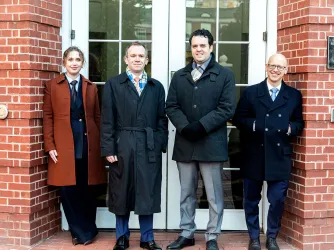
VICTORY: Jury finds Tennessee high school student’s suspension for sharing memes violated the First Amendment
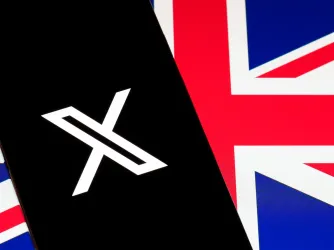
FIRE statement on calls to ban X in EU, UK
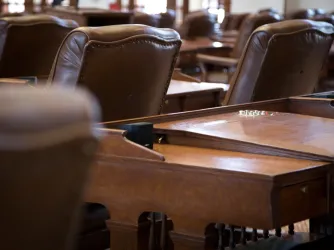
Another year, another session of AI overregulation
